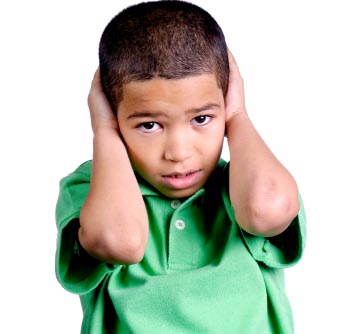Noise is an enemy of hearing, and it really doesn't take a lot of noise to damage hearing. About 10 million people in the United States alone —from troops returning from war to students with music blasting through headphones— are suffering from impairing noise-induced hearing loss.
The rising trend is something that researchers and physicians at the University of Michigan Kresge Hearing Research Institute are hoping to reverse, with a cocktail of vitamins and the mineral magnesium that has shown promise as a possible way to prevent hearing loss caused by loud noises. The nutrients were successful in laboratory tests, and now researchers are testing whether humans will benefit as well.

"The prevention of noise induced hearing loss is key," says Glenn E. Green, M.D., assistant professor of otolaryngology at the U-M Health System and director of the U-M Children's Hearing Laboratory.
"When we can't prevent noise-induced hearing loss through screening programs and use of hearing protection, then we really need to come up with some way of protecting people who are still going to have noise exposure. My hope is that this medication will give people a richer, fuller life."
The combination of vitamins A, C and E, plus magnesium, is given in pill form to patients who are participating in the research. Developed at the U-M Kresge Hearing Research Institute, the medication, called AuraQuell, is designed to be taken before a person is exposed to loud noises. In earlier testing at U-M on guinea pigs, the combination of the four micronutrients blocked about 80 percent of the noise-induced hearing impairment. This is the first NIH-funded clinical trial involving the prevention of noise-induced hearing loss."
If we can even see 50 percent of the effectiveness in humans that we saw in our animal trials, we will have an effective treatment that will very significantly reduce noise-induced hearing impairment in humans. That would be a remarkable dream," says co-lead researcher Josef M. Miller, Ph.D., the Lynn and Ruth Townsend Professor of Communication Disorders and director of the Center for Hearing Disorders at the U-M Department of Otolaryngology's Kresge Hearing Research Institute. Miller is leading the research along with colleagues at Karolinska Institute, where Miller also has an appointment; the University of Florida; and the University Castille de La Mancha.
Info at ScienceDaily
Image at https://blogger.googleusercontent.com/img/b/R29vZ2xl/AVvXsEi5jSmy5JtT6DEnCijTp6RrIijluVvAuKN9M1blO9JOcj9A5f2zHCsnYL5He38VAn63EX4XEo98HhoJnUNwy_ywWj8wXxRbiEQ86Ue0Rw1dskhH8IXTRdOQY565buAMYFGTCnGfuZAmAp4/s1600/10.jpg


